Production Facilities
Production Facilities
Glaukos Algae Technologies Private Limited operates in 25 acres production facility in Alluru Mandal, Nellore district-Andhra Pradesh in the East Coast of India with a year-round excellent tropical climatic condition suitable for the cultivation of Dunaliella salina. With the current capacity, the company is aiming to produce 10 metric tons of high beta carotene containing dry Dunaliella salina biomass per year. Based on the customer needs it is proposed to expand the current facility to double the production capacity by end of 2024.
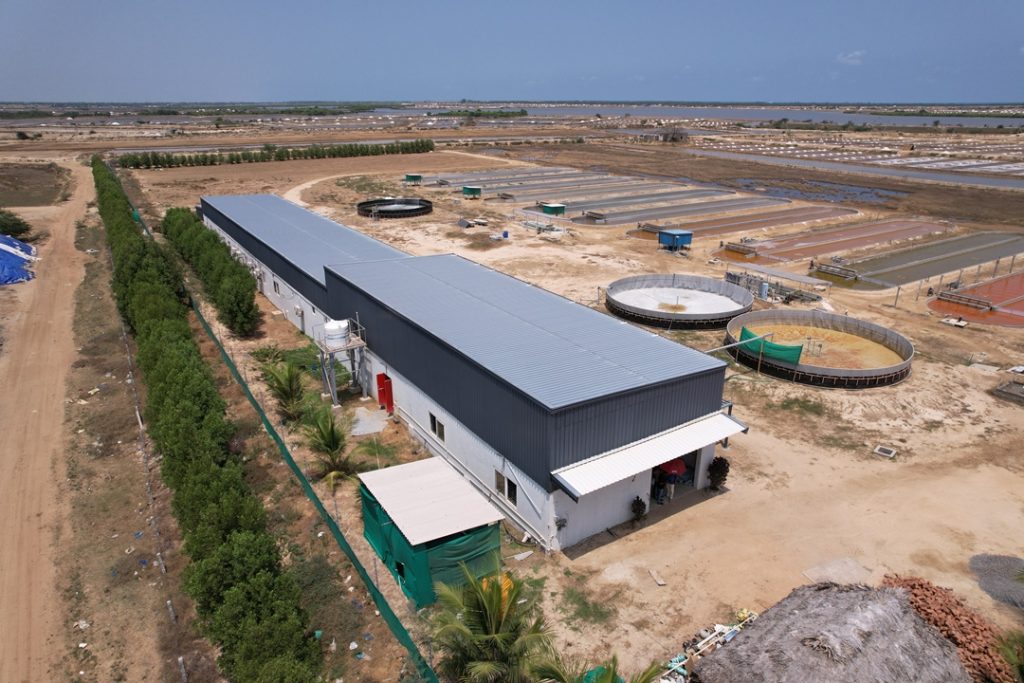







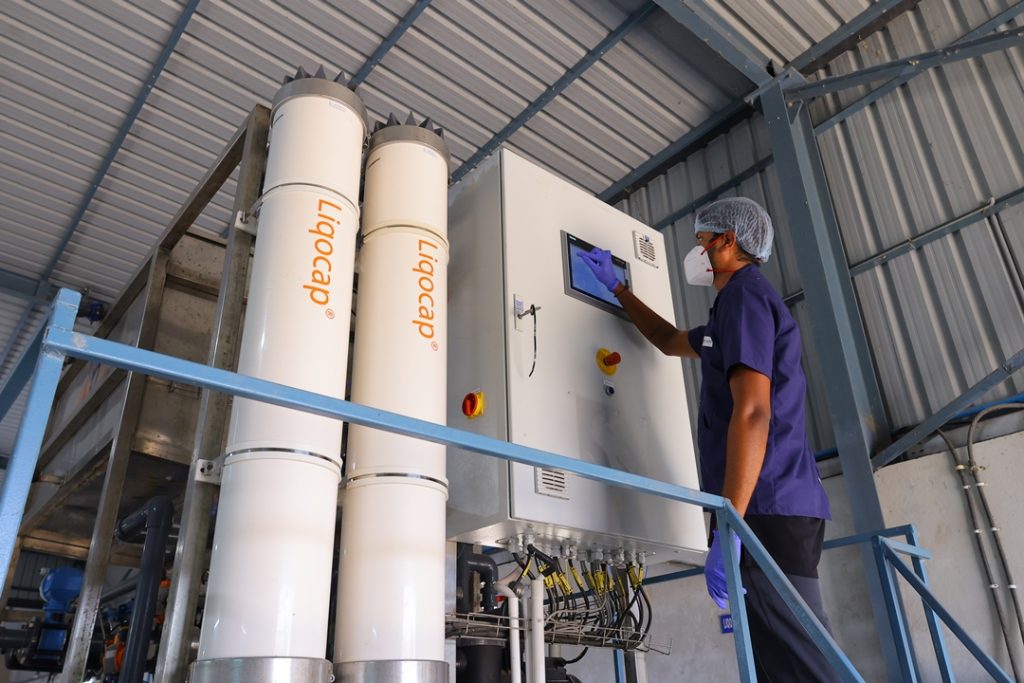
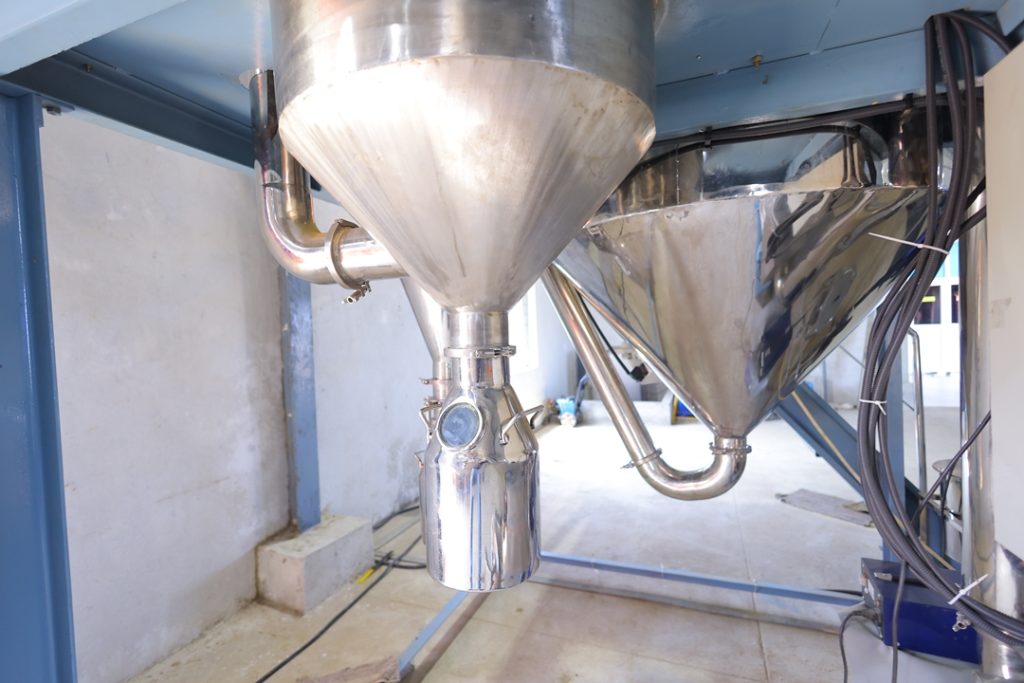

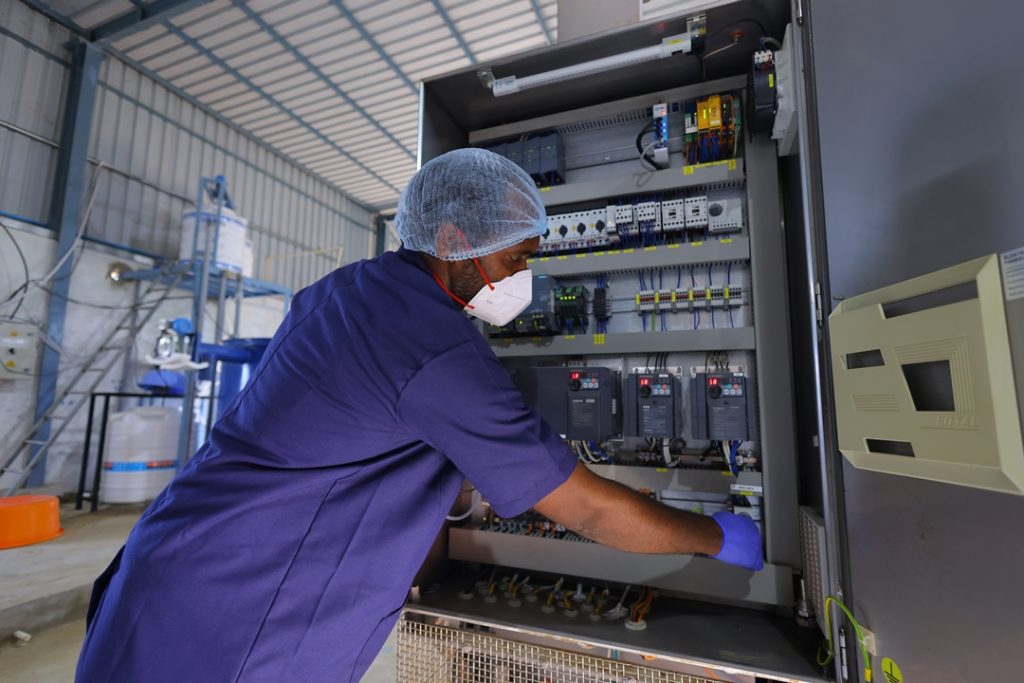

Production Process
The most advanced production processes in the world:
Glaukos has preserved the natural photosynthetic process that microalgae have followed for billions of years, enhancing it through advanced technologies, knowledge, and protocols to facilitate controlled and intensified cultivation. The production process involves various stages, each meticulously managed to optimize microalgae culture. Here is an overview of the advanced production processes:
UPSTREAM PREPARATION:
LABORATORY
The process begins in the laboratory, where strains and inoculum are generated and maintained in small volumes. The goal is to produce young cells from selected strains for specific applications. This ensures high-quality culture volumes with optimal cell density, providing a solid foundation for industrial-scale cultures.
Water Treatment: Physical and chemical treatment, along with efficient pumping, is employed to ensure water quality.
Nutrient Preparation: Cultivation medium is prepared with precise control over nutrients to support the growth of microalgae.
Inoculation: Inoculation is a critical phase for scaling up the process. It involves introducing the selected strains to initiate industrial-scale cultures.
CO2 Supply: The CO2 pipeline and supply are carefully managed to enhance the photosynthetic process and support microalgae growth.
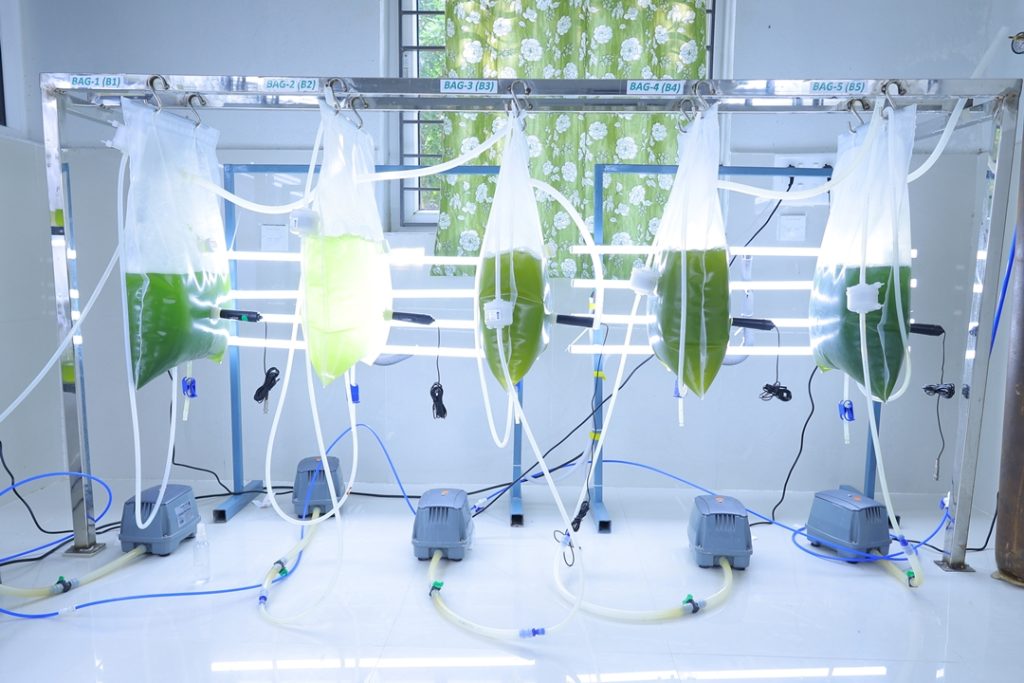

UPSTREAM CULTIVATION
algae
Following the preparation phase, the next step involves intensive and controlled microalgae cultivation in photobioreactors. These specialized systems permit light passage for photosynthesis, and optimized culture media are used for each strain. Rigorous protocols control essential parameters such as pH, temperature, nutrients, dissolved oxygen, and CO2 injection. This meticulous control ensures maximum production rates.
DOWNSTREAM PROCESS
BIOMASS HARVESTING
The final step is the harvesting of the microalgae biomass. Once the crop reaches maturity, a portion of it is concentrated, and microalgae cells are separated. Water and nutrients are then reintroduced into the system. Due to microalgae’s high productivity, harvesting can occur daily, providing a significant advantage over other plant raw materials. The resulting biomass is stabilized and can undergo further processes based on the specific industry requirements.
By maintaining the integrity of the natural photosynthetic process and implementing advanced technologies, Glaukos has developed a comprehensive and efficient production process for microalgae cultivation, ensuring optimal quality and productivity throughout the entire lifecycle.
algae


ULTRAFILTRATION
Ultrafiltration system with 0.025 µm pore size filter is widely used for water treatment and harvesting a wider range of value-added microalgae. Using this technology, the water is purified, used for production, and the utilized water is recycled and sent back to production. The Concentration of algae obtained from the Raceway Pond is 0.05%. Upon ultra-filtering using ultrafiltration, the concentration is further increased to 15%. This technology ensures that 100% of the algae cells are retained, resulting in high stable throughput and minimal fouling. The recycling system within the ultrafiltration separates the effluent into a concentrate containing the lost algae cells and clean water free from other microbes. The membrane filters are present inside to ensure the stability of algal cells. This technology is completely suitable for harvesting a food-grade product. This system has long service life with minimal maintenance.
CENTRIFUGATION
Centrifugation system that could separate a variety of solids that are even Abrasive, non-permeable, soft, and greasy in nature. It involves controlled and remote monitoring. With centrifugation, harvesting highly sensitive algal cells like Dunaliella salina is possible without damaging the internal cell structure. The separation efficiency is higher than 95% hence 25% to 35% of solid content can be obtained. The cells of Dunaliella salina are maintained intact and are left undamaged. The Spiral plate technology ensures that the product temperature is unchanged. This spiral plate technology allows high separation effectiveness at minimal energy demand under laminar flow the suspended particles sediment at a minimal settling distance. The solids are discharged dry as possible with this technology. Larger volumes of algal biomass are obtained with the highest energy efficiency. This produces the highest quality dry paste with longer shelf life of the biomass. It harvests small and sheer sensitive algae without damaging the cell structure. The dry weight of the algal biomass obtained is 1.5 to 2 times better than that of traditional centrifuge. The highly effective separation process takes place with a minimal energy demand. No chemicals are needed.
The currently available downstream technology for algal processing results in the breakage of cells. In combining both ultrafiltration and Centrifugation this is prevented, and a higher concentration of algae is produced (up to 25% solids).


Figure 1: Comparison of traditional tray drying Vs freeze drying
FREEZE DRYING
Freeze-drying appears to be an effective method of preservation for some algal strains. Freeze drying is also called lyophilization. Sublimation is the main principle of the freeze-drying process. During sublimation, water is directly converted to vapor without passing through the liquid state in vacuum. Freeze drying has already been successfully used for encapsulation to maintain nutritional factors and facilitate drying.
It is carried out at a low temperature, preserving the functionality, cell viability, or nutritional values even after water is removed in the dehydration process. Freeze-drying is a good choice of dehydration to produce products of high quality providing better active ingredient retention, textural properties, and colour preservation. The results indicate that the combined effect of freeze-drying and 6-month storage was reduced losses of carotenoids compared to tray dried and traditionally dried products (Fig. 1).
DRYING AND PULVERIZING
algae
Post harvested Dunaliella wet biomass was dried in freeze drier at 60 °C for 18 hours and pulverized in industrial pulverizer to make it as powder.
VACUUM PACKING
Pulverized Dunaliella powder was quality checked and packed in specialized bags under vacuum and sealed for different sizes for marketing.


